#classic civilizations
Text
Ancient Greek and Roman music Masterpost
As our national epic, the Odyssey, did I'll start from the middle. Please listen to the sound of medieval Greek music and then come back. It's an exercise, I command you!
Middle Ages Greek music is speculated to be "slowed down ancient Greek music"! 😁 So, take notes on that!
youtube
youtube
Christodoulos Halaris - Anthology of Byzantine Secular Music
(Christodoulos Halaris was a prominent Greek composer, researcher, and musicologist. He focused on secular Byzantine and traditional music, incorporating his extensive research into a solid and singular musical language.)
After your warm-up (and perhaps some confusion) let's get into what you came here to see.
What Ancient Greek and Roman Music Sounded Like - A Beginner's Introduction
youtube
Α fantastic introduction by a composer, musician, and researcher who calls himself:

OKAY, OKAY, HE IS FARYA FARAJI, YOU GOT ME.
So, this is going to be another excellent video where he spits facts. He gives a great impression of how ancient Greek and Roman music sounded like.
And no, they didn't sound like the watered-down (north)-eurocentric "ancient Greek music" on youtube videos you find. (who's surprised at this point, after all this Northwestern appropriation) Unless they are made by Farya Faraji because… the man knows his shit (and our shit 😂)
By the way, I called it "watered down", not because I believe western music is lame, but because the performers apply western rules to ancient Greek music, stripping it of all the Heterophonic complexity.
In the video above, you'll learn how the lyre should actually be played!!! And what instruments have been in continuous use in Greece for more than 2.000 years! And see all the ways our ancient and traditional music is more complex than Western music - such as Western music can be more complex than ours in other ways! (as also stated in the video)
And before you ask: Why does ancient Greek and Byzantine/traditional Greek music sound Oriental? Well, that's just your ear and biases and Hollywood stereotypes, my dear friend. See, these sounds are not (just) Oriental! They are originally Greek, too!
Many tunes and the way of singing the West associates today with the Middle East came from the Greek world (where these tunes are still in use, mind you) or other Mediterranean countries. That's not to say that Middle Eastern nations didn't have these scales and twirls for a long time - because they did. That's their ancient music, too.
Please see the video below to make more sense of my ramblings:
The Greco-Roman Influence on Middle-Eastern Music
youtube
All of Farya's videos have their sources in the description so make sure to check them out!
Now you can better enjoy the Epitaph of Sekeilos you heard in the first Middle Ages video! You can also listen to another great version by Farya, where he uses the above ancient Greek principles he mentioned in his video. That's why his version actually feels fun to listen to, thank god! (Of course Chalaris also orchestrates the Epitaoh in an excellent way)
youtube
Personal commentary: I am happy to share Farya's work online because he put into words why reconstructions of ancient Greek music online don't sound Greek at all. Greeks have a hard time relating to it because... that's not our folk music. They sound boring like Chopin playing piano when he was 3 years old. (But by now you know why! 😉)
Of course, ancient and traditional Greek music are not identical and no one expects them to be. But given our history, our music history, and cultural evolution, we know the sounds of our music - as all people can identify the music of their land and area. I am glad my gut feeling was right and the music wasn't actually that simple. With the complexity of our ancient chants and the plethora of instruments we had in antiquity, there was no excuse for our ancient melodies to be that simple.
#ancient greek music#instruments#music history#middle ages#history of music#lyre#harp#ancient greek#classics#classic civilizations#bagpipes#aulos#pipes#roman history#panflute#mediterranean#historian#antiquity#farya faraji#chants#Youtube#byzantine music#byzantine empire#byzantium
168 notes
·
View notes
Text
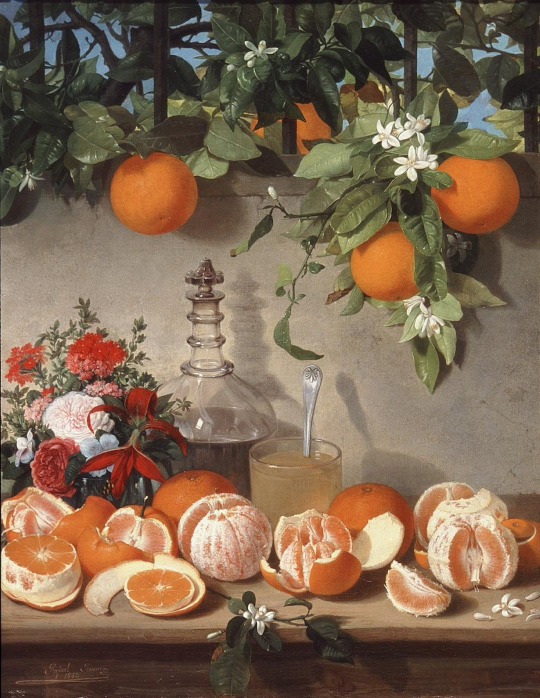
Rafael Romero Barros (Spanish, 1832-1895)
Still life with oranges, 1863
#Rafael Romero Barros#spanish art#spanish#hispanic#latin#still life#bodegon#1800s#art#fine art#european art#classical art#europe#european#oil painting#fine arts#western civilization#europa#mediterranean#southern europe#traditional art#painting#oranges#orange#harvest#spring
9K notes
·
View notes
Text
Classic Literature Sexyperson Tournament; Round 1


propaganda:
Mercutio:
has an article
watch the baz lurhman movie. that's the propaganda.
He is absolutely full of Gender and chaos and frightening narrative awareness for a guy who seems to think (hope?) he’s in a comedy until the minute he dies. I love a guy who can prophesy the deaths of his friends while consistently being comic relief.
i mean come on.
I feel like Mercutio fits exactly into the sexy person category. He’s a prince, he’s a fighter, he may ambiguously be in love with his besties, hes a silly guy, he dies tragically.
Carmilla:
Um. Vampire. Seductress. Sapphic
#HAHA WAR FLASHBACKS ANYONE?????#first; who's gayer. now; who's sexier#reminder: BE CIVIL!!!!! <3#you can write propaganda and i'll rb it!#tournament poll#classic lit sexyperson bracket#r1c#round 1#romeo and juliet#carmilla
595 notes
·
View notes
Text
The Black Butler revival will, of course, in this day and age, be the complete embodiment of pro-ship vs. anti-ship discourse, given the subject matter.
But for those of you who are watching this for the first time in 2024 (which includes myself!), there are certain things about the show you simply must understand, for the sake of media literacy.
The first is that Black Butler is supernatural gothic romanticism at its core. This genre alone should tell you that the relationships integral to the plot will be complex, messy, and toxic, by default. That is not only a huge part of this genre’s appeal, but very much the point of the story.
The themes are dark, the terrible things that happen to the main characters are dark, and therefore the relationships at the forefront (and in the background) will reflect that.
The gothic genre has been alluringly popular for over a century (longer, if you know your history) because audiences are entranced by the macabre, the tainted antiheroes, the monsters who live inside us all. It’s popular for a reason.
That being said, understand that whether you, the viewer, ship Sebastian and Ciel or not is irrelevant. Their bond doesn’t need to be understood as romantic or sexual, but it sure as hell isn’t normal. It isn’t healthy. And the audience knows that. That’s the draw. It’s what makes them compelling to watch.
Ciel and Sebastian’s relationship mirrors many gothic novels, poems, and penny dreadfuls written in the Victorian Era (the very same time period in which Kuroshitsuji takes place). The Victorian folks who read these tales for the first time ate that shit up, because it was tantalizing. It was shocking. It was inappropriate, and monstrous, and violent, and erotic, and went against societal norms. But that was the point.
A huge part of gothic romanticism is the blatant sexualization of the relationship between the “monstrous” characters and their human counterparts in the story. Sex itself doesn’t need to take place for their bond to be sexually charged. The forbidden nature of their relationship—which typically involves layers of social taboos, moral ambiguity, or simple infatuation—is what makes their interactions erotic. Sexual contact rarely ever actually happens in these stories. It’s the taboo nature of their bond that creates the tension.
One of the many reasons audiences love this genre is the constant question of morality in its themes. Who, between them, is the real monster? Could the human character have ever been saved? This genre is often associated with tragedy, because the bond forged between the characters in these stories are destined to end in death and destruction. The reader knows it can’t end any other way. How can it?
But an integral element of these gothic tales is the catharsis that comes with this tragedy. The corrupted human often gets what they want in the end, even if it’s at the cost of their own life. Whether they regret their choice to foster this monstrous relationship varies on the story, but it doesn’t change the trajectory of their descent.
Sebastian and Ciel’s relationship is the whole plot of Black Butler. Their closeness bears a grotesque ick factor, but it is deliberate. It is a constant reminder of how unnatrual their bond truly is. Rationalizing or watering down how abnormal they are about each other misses the point entirely. They will never have a normal, healthy relationship, and that’s what moves the plot forward.
That’s why you’re watching it.
#black butler#kuroshitsuji#ciel phantomhive#sebastian michaelis#the soundtrack repeatedly uses gregorian chants of the agnus dei. like COME ON. gothic media loves a catholic allegory#gothic literature#gothic romanticism#neo queen serenity’s posts#please remember to be civil! or else my block button will be upon ye#black butler analysis#kuroshitsuji anime#yana toboso#black butler anime#classic literature#black butler meta#black butler season 4#black butler s4#kuroshitsuji season 4
358 notes
·
View notes
Text
Personal pictures of some of the BEAUTIFULLY preserved artwork in Pompeii
I took all of these on a study abroad trip that I had the great fortune of being able to go on at the beginning of this year :)
I haven’t been able to STOP thinking about them, so here ya go🤲🏼


i may, or may not, have gotten this one piece of wall art (the fig tree & snake) tattooed on my body…



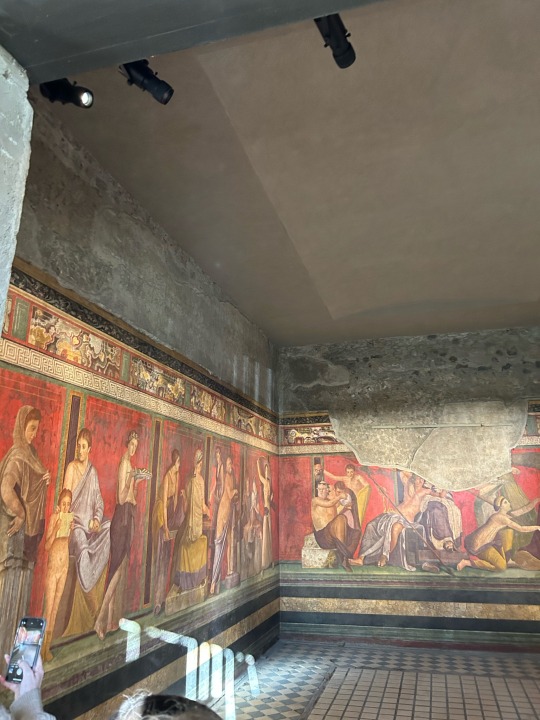
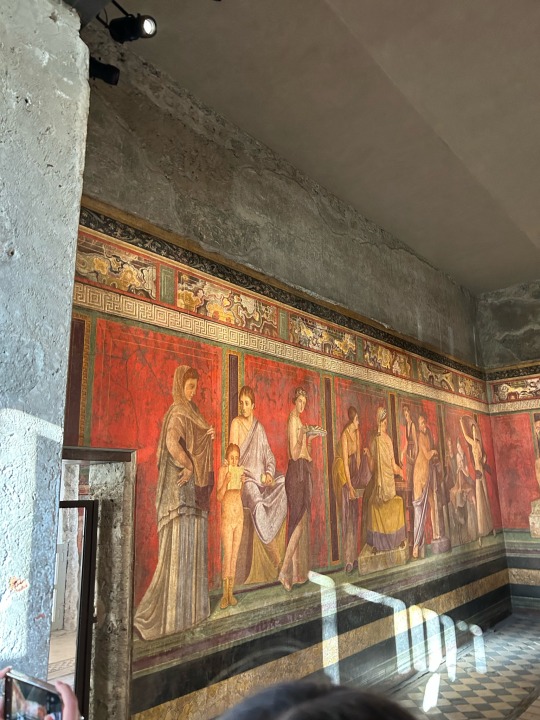
these incredibly detailed wall pieces are a part of the Dionysus Mystery Cult walls and had our whole group stopped for a GOOD 20-30 min…

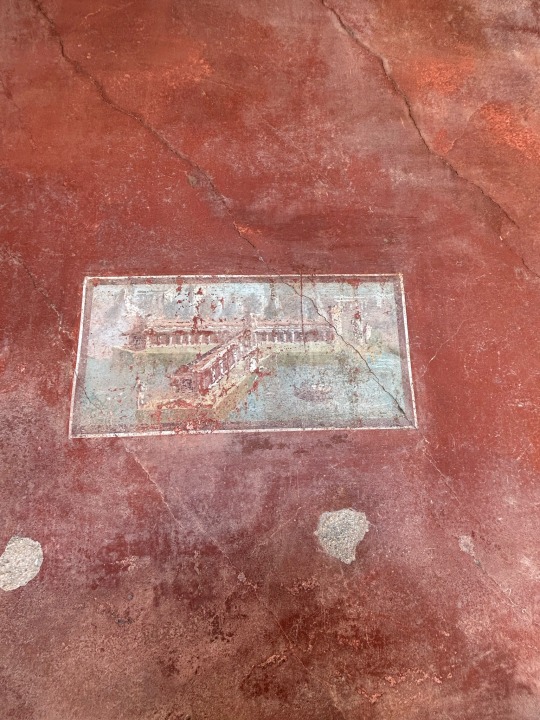

#pompeii#pompeii pictures#italian art#italy#pompeii art#myth#classical studies#classical art#ancient civilizations#ancient art#photography#art photography
190 notes
·
View notes
Text
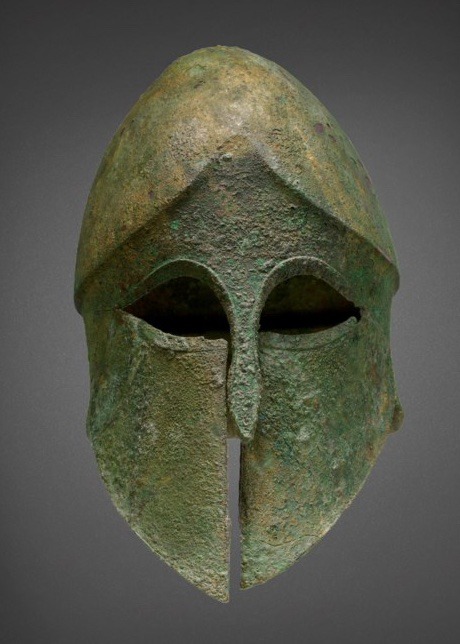





A GREEK BRONZE CORINTHIAN HELMET
LATE ARCHAIC TO EARLY CLASSICAL PERIOD, CIRCA 525-475 B.C.
#A GREEK BRONZE CORINTHIAN HELMET#LATE ARCHAIC TO EARLY CLASSICAL PERIOD#CIRCA 525-475 B.C.#bronze#bronze helmet#military equipment#ancient artifacts#archeology#archeolgst#history#history news#ancient history#ancient culture#ancient civilizations#ancient greece#greek history
210 notes
·
View notes
Text

738 notes
·
View notes
Text
On Janus, the two-faced Roman god of beginnings
Or: how January got its name & why you shouldn’t give up on your New Year’s resolutions just yet
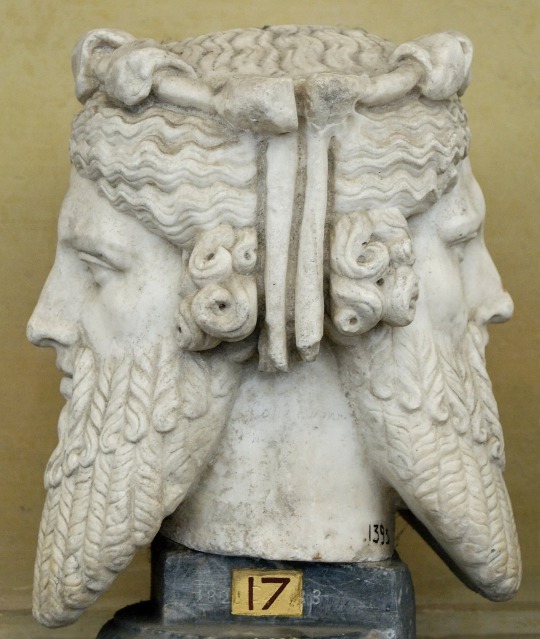
Now that we’re more than halfway through January, how are your New Year’s resolutions coming along?
If you’re anything like most of us, your resolve may be getting shaky.
According to a recent Forbes survey, the average resolution lasts a mere 3.74 months, and only 6% of people stick with their goals long term.
But you know what?
Even if you’ve failed to live up to your resolutions less than a month into 2024, that’s fine. Don’t give up on yourself just yet.
Here’s an unlikely source of hope and motivation to get back up again and keep at it in the guise of one lesser-known (undeservedly!) Roman deity.
#ancient history#history#ancient civilizations#ancient rome#roman empire#history of religion#classical mythology#roman mythology#mythology and folklore#roman gods#january#new year’s resolution#antiquity#classical antiquity
120 notes
·
View notes
Text


Portraits of Augustus and Livia from Neuilly-le-Réal, France
This must be the oldest-looking Augustus I've ever seen. He has wrinkles! If you squint he could be downright forty-ish. What happened here. Where is the youthful not a day over thirty Augustus?
#also he look a bit creepy#I would't want to have this in my house watching me#augustus#caesar augustus#livia drusilla#ancient rome#gaius julius caesar octavianus#emperor augustus#deep wrinkles on the forehead are more the mark of Claudius#classical rome#roman empire#ancient culture#ancient history#ancient civilizations
325 notes
·
View notes
Text

Q: Do you get off on being tempestuous?
A: “What do you mean “get off”? That’s just the way I am.”
Q: How would you like to be remembered?
A: “I want to be remembered as a diva from beginning to end who never compromised in what she felt about racism and how the world should be, and who to the end of her days consistently stayed the same.”
Q: But isn’t life about evolving and changing?
A: “Not for me.”
/ Brantley Bardin interviewing legend-with-an-attitude with Nina Simone in Details magazine, January 1997 /
Born on this day: lacerating, regal and fierce High Priestess of Soul Nina Simone (née Eunice Kathleen Waymon, 21 February 1933 – 21 April 2003). I’d argue Simone was at her artistic zenith between 1964 – 1966, when she recorded essential statements like “I Put a Spell on You”, “Work Song” (“I left the grocery store man bleeding …”), “Ne Me Quitte Pas”, “Wild is the Wind”, “Don’t Let Me Be Misunderstood”, “I Hold No Grudge” and especially “Four Women” (“I’m gonna kill the first mutha I see …”). Pictured: portrait of Simone by Herb Snitzer, 1959.
#nina simone#high priestess of soul#fierce#herb snitzer#jazz#blues#black classical music#lobotomy room#diva#kween#civil rights movement#african american
141 notes
·
View notes
Text

I'll be posting some of these illustrations I did for a cool short story project about the power of seeking value outside of material desires. And it has an Asian feels, which was a nice contrast to so much of the Greek design works. 🤘😁🤘
#mythology tag#percyjackson#dark academia#classical literature#percy jackon and the olympians#iliad#classics#mythologyart#art#artists on tumblr#odyssey#literature#ancientworld#ancienthistory#ancient civilizations#fantasyart#asianmythology#illustration
64 notes
·
View notes
Text

William Adolphe Bouguereau (French, 1825-1905)
L'Amour et Psyché, 1899
#different colour and quality#not the ai fix version#l'amour et psyche#original quality#french art#french#france#mythological art#mythology#western civilization#1800s#William Adolphe Bouguereau#William Bouguereau#French painter#europe#French painting#European painting#European painter#classical art#fine art#greek mythology#L'amour et psyche#cupid and psyche#art#painting#oil painting#oil on canvas#flying#beautiful#beautiful art
2K notes
·
View notes
Text
People who are like “Omg gen z theatre kids only know *proceeds to list every single musical that came out after 1999*” are the most annoying assholes like hey maybe we just don’t like shit from the 1960’s or we have specific tastes have you ever considered that
#something can be said for people who are like annoyed with people who only know like Hamilton and heathers and ast like they know everything#but they’ll be like ‘gen z only knows Hadestown six bmc deh wicked in the heights heathers rtc-‘#like just say you don’t like modern musicals and move on???#they completely forget that like with different eras you’re gonna get different styles#like of course some people only like musicals from the past two decades that’s just their style#same with people who only like classics#people do this shit with everything like#you know what pop culture is right#could you imagine if we did this shit with like regular music#no shit saw someone say something ab people who only Hamilton and heathers and people were in the comments making whole ass lists and like#SOMEONE SAID LES MIS. THATS ISNT EVEN A POPULAR MODERN MUSICAL AT THIS POINT ITS JUST A CLASSIC#LIKE THAT MUSICAL CAME OUT IN 1980 AND THE BOOK IS LIKE OVER 100#LIKE LES MIS CAME OUT DURING THE CIVIL WAR YOU CANT BE ALL HIGH AND MIGHTY AB IT NOT BEING SOPHISTICATED ENOUGH FOR YOU#sorry for ranting tiktok pissed me off#but didn’t we literally go through this on tumblr in the 2010’s?#I thought we all agreed that was horrible and to not do that again but like when has tiktok ever learned from tumblrs mistakes#madurday night live#musicals#musical theatre
123 notes
·
View notes
Text

#moodboard#paris#booksbooksbooks#dark academia#dark academia vibes#books aesthetic#classic literature#dark academia moodboard#dark academia aesthetic#dark acadamia aesthetic#cat mom#catlover#cats#cute cats#my cat#black cat#cats of tumblr#classic aesthetic#classic academia#ancient civilizations#ancient egypt#egyptology#egyptomania
24 notes
·
View notes
Text
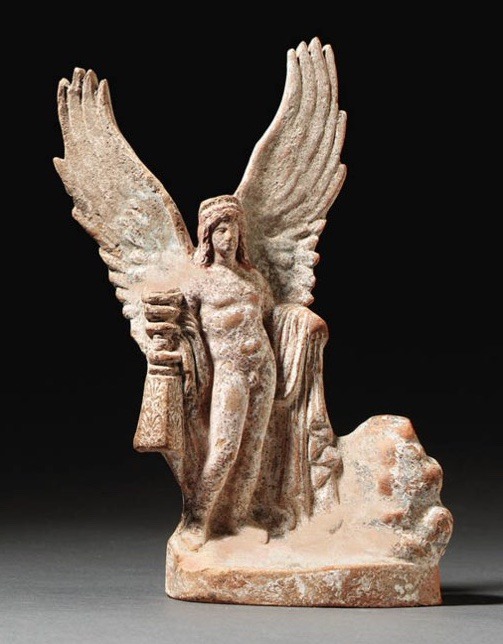
A GREEK TERRACOTTA FIGURE OF EROS
Classical period, circa late 4th century b.c.
6 in. (17 cm) high.
#A GREEK TERRACOTTA FIGURE OF EROS#classical period#circa late 4th century b.c.#terracotta#ancient artifacts#archeology#archeolgst#history#history news#ancient history#ancient culture#ancient civilizations#ancient greece#greek history#greek gods#greek art
270 notes
·
View notes
Text




Sometimes, the bull-leaping works. Sometimes, you eat shit and somebody makes a seal-stone out of it.
(From a hundred year and change-old copy of Arthur Evans' "The Palace of Minos at Knossos"; his notes on his (rather ghastly) excavation of Minoan ruins in Crete.)
#minoan#greek mythology#antiquity#classics#bull leaping#bronze age#ancient civilizations#archaeology
95 notes
·
View notes